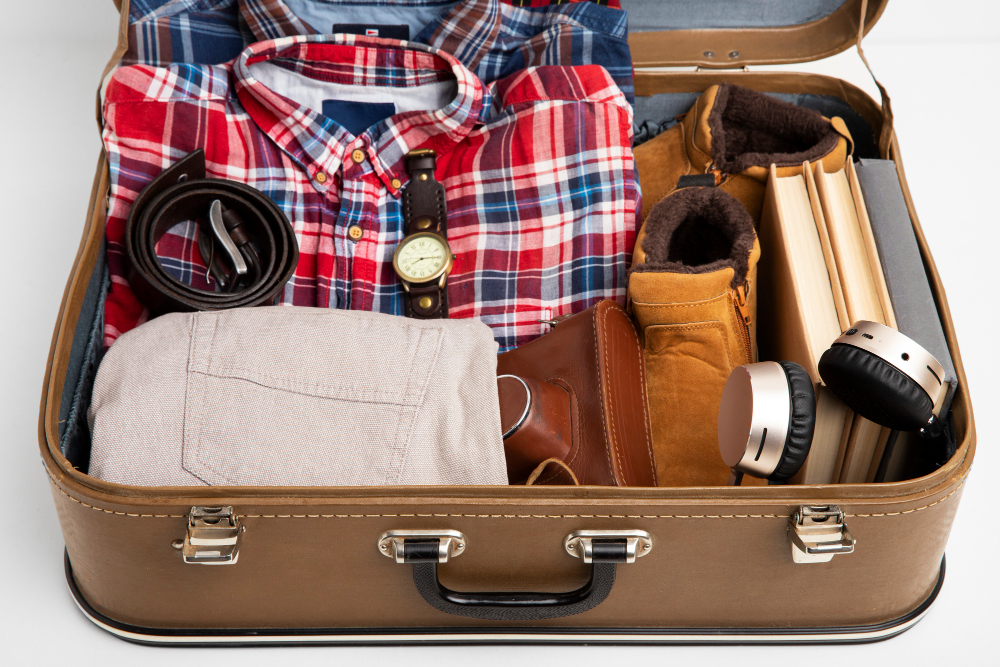Packing for a trip can often feel like a high-stakes game of anticipating the unknown. Will it rain? Should I pack more socks? Packing can be especially daunting for new travelers and even seasoned ones. With airline baggage fees and weight limits, it’s essential to learn the fine art of packing light while still packing right.
This guide is designed to help you prepare for your travels in a way that is both thorough and efficient. Whether you’re planning an epic backpacking adventure or a sun-soaked beach holiday, these packing tips will ensure you’re ready for anything your travel throws your way.
Section 1: The Essentials
Every great adventure starts with the right tools in your kit. Here are some of the unmissable essentials you can’t leave home without.
A. Travel Documents
Without your travel documents, you’re going absolutely nowhere. This is a no-brainer, but sometimes the most obvious things are the easiest to forget. Here’s what should be in your travel portfolio:
- Passport
- Visa (if required)
- Driver’s license
- Travel insurance documents
- Maps and itineraries
- Any required medical information or copies of prescriptions
B. Packing Organizers
Keep your gear tidy and accessible with the right packing organizers, like packing cubes, compression sacks, or garment folders. Not only do they save space, but they also keep you organized and reduce the hassle of repacking your bag every time you move.
C. First Aid Kit
Preparedness is key, especially when you’re away from familiar healthcare. Your first aid kit should be compact but comprehensive, including:
- Band-aids
- Antiseptic wipes
- Pain relievers
- Antihistamines
- Scissors
- Tweezers
- Any prescription medications you take
D. Toiletries
Choose travel-sized toiletries to save space and comply with carry-on regulations. Your kit should include:
- Toothbrush and toothpaste
- Deodorant
- Shampoo and conditioner
- Body wash
- Moisturizer
- Sunscreen
- Personal care items (feminine hygiene products, razors, etc.)
- Insect repellent
- Any specific skincare treatments or medications
E. Snacks
Having a few snacks on hand is essential for keeping energy levels up if you get stuck in transit or can’t find food that suits your needs. Think nuts, granola bars, or even a pack of crackers.
Section 2: Clothing for All Seasons
Choosing appropriate attire is crucial for the success of your journey. The key is versatility and layering, so you’re prepared for any weather or occasion.
A. Tops
Bring a mix of short and long-sleeve shirts made of breathable fabrics. A good rule is to pack enough for one week and do laundry if you’re traveling for longer periods.
- T-shirts
- Button-up shirts
- Sweaters or light jackets
B. Bottoms
Similar to your tops, choose bottoms for various activities and weather conditions. Again, aim for a week’s worth and do laundry if necessary.
- Pants (jeans, joggers, or quick-dry travel pants)
- Shorts
- Skirts or dresses (as per your preference)
C. Undergarments and Socks
It’s often said that there’s no such thing as packing too many socks. Pack enough undergarments for at least a week, and then add a few more, just in case.
- Underwear
- Bras (bras that can serve multiple purposes, like a sports bra, are ideal)
- Socks
- Thermal undergarments (if you’re traveling to cold climates)
D. Outerwear
This includes weatherproof gear that’ll help you brave the elements.
- Windbreaker
- Raincoat
- Puffer jackets (for extra warmth)
E. Footwear
Shoes can be a bulkier item, so choose wisely and remember that comfort is key.
- Walking shoes or boots
- Sandals or flip-flops
- Dress shoes or a suitable alternative, if you’re planning on a more formal event
F. Accessories
Little things that can make a big difference in your comfort or style.
- Hat
- Sunglasses
- Scarf
- Gloves
- Umbrella
- Belt
G. Swimwear
Don’t forget your swim gear, even if you don’t initially plan to be near the water. You never know when the occasion might arise.
- Swimsuit
- Flip-flops
- Rash guard (for sun protection or water sports)
Section 3: Technology and Entertainment
Traveling shouldn’t mean disconnecting from the world. Ensure you have what you need to stay in touch and entertained.
A. Gadgets
- Smartphone
- Laptop or tablet
- E-reader
- Headphones
- Chargers for all electronic devices
B. Travel Adapters
Different countries may use different plug types. A universal adapter can be a lifesaver, ensuring you can charge your devices regardless of your location.
C. Entertainment
Long flights and layovers can be a drag without something to do. Pack a few items to keep you occupied:
- Playing cards or small board games
- A good book
- A journal
- A camera or GoPro
Section 4: Miscellaneous Items
The devil is in the details, and often the smallest things can cause the biggest headaches.
A. Travel Money Belt
Keep your valuables safe and sound with a travel money belt. It’s a discreet way to protect your cash, cards, and documents from pickpockets and loss.
B. Travel Locks
Secure your luggage with a TSA-approved lock to keep anything valuable (or simply sentimental) safe and secure.
C. Reusable Water Bottle
Staying hydrated is crucial, and a reusable water bottle allows you to save money and the planet by refilling from fountains.
D. Meditative Aids
Long journeys can be tedious, and travel can at times be stressful. Items like earplugs, eye masks, and even travel-sized pillows can help you relax and potentially catch some much-needed rest.
E. Laundry Bag
Separate your dirty clothes from the clean ones with a dedicated laundry bag. It’ll make unpacking and laundry day a breeze.
F. Collapsible Tote Bag
Handy for day trips or as an extra bag on the way home, a compact tote can be a lifesaver.
Section 5: Tailoring Your Kit to the Journey
Not all trips are created equal. Depending on the nature of your adventure, certain items may be more crucial than others.
A. Business Trip
Professional travel requires a more formal approach. Extra care in choosing clothing that’s wrinkle-resistant and project-appropriate will go a long way in making a good impression.
B. Holiday Travel
For festive occasions, it’s important to pack for the celebration. This may include party outfits, host gifts, or even travel decorations if you’re adventuring during the holiday season.
C. Outdoor Adventure
If you’re heading out for some serious nature time, your packing list should include items like a water filter, a stove, and a good tent, among others.
D. Volunteer or Service Trips
Packing for a mission trip or service vacation may require specific gear related to the work you’ll be doing. Always check with your program coordinator for guidelines.
Conclusion:
By following these packing guidelines and taking the time to prepare thoughtfully, you can set yourself up for a successful and stress-free adventure. Remember, less is often more when it comes to packing, and you can always pick up a few items as you go if necessary.
FAQs
Can I pack a power bank in my carry-on luggage?
Yes, power banks are allowed in carry-on luggage. However, they are not permitted in checked luggage due to safety regulations.
How do I keep my clothes wrinkle-free in my suitcase?
Rolling your clothes instead of folding them can reduce wrinkles. You can also use packing cubes or plastic dry cleaning bags to separate items and keep them organized.
What’s the best way to pack shoes without dirtying other items?
Pack shoes in disposable shower caps or inside a dedicated shoe bag to prevent dirt from transferring to your clothes.
Is there a trick to maximizing space in my suitcase?
Utilize every inch of space by filling shoes with small items like socks or chargers, and consider using compression bags to reduce the volume of bulky items.
How do I ensure my liquids don’t leak inside my luggage?
Seal liquids in leak-proof bags or containers. You might also unscrew the cap, place a piece of plastic wrap over the opening, and then screw the cap back on for an extra seal.
Are there restrictions on the type of snacks I can bring on a plane?
Generally, solid food items are allowed. However, liquid or gel-like food items must adhere to the 3-1-1 liquids rule (3.4 ounces or less per container in one quart-sized plastic bag).
What type of travel adapter do I need?
This depends on the country you’re visiting. Research the plug type and voltage of your destination to determine if you need a plug adapter, a voltage converter, or both.
How can I stay connected to the internet while traveling internationally?
Consider buying a local SIM card, renting an international mobile hotspot, or checking if your mobile provider offers an international plan.
What should I do if I lose my passport while abroad?
Contact your country’s nearest embassy or consulate immediately. They will guide you through the process of obtaining a temporary replacement.
How can I minimize luggage weight to avoid fees?
Wear your heaviest clothes and shoes on the plane, pack multi-purpose garments, and prioritize lightweight, versatile items that can serve multiple uses.




